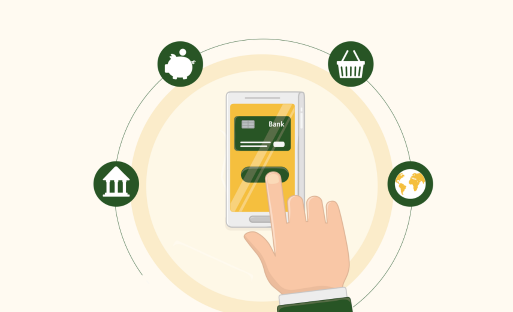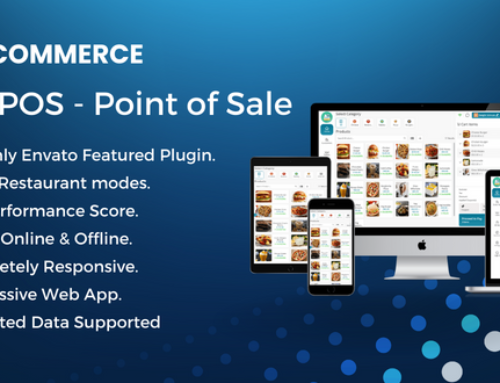INTRODUCTION: DIGITAL BANKING SYSTEM
This bank comes with PHP Laravel and is a professional digital banking solution. It was designed for the use of those individuals who want to launch their own website for their digital banking wallet. Sixty-nine percent of individuals throughout the world, or 3.8 billion people, now have an account at a bank or with a mobile money provider. This is an essential step in the process of leaving poverty. This is a significant increase from just 51% in 2011 and 62% in 2014. It’s a sector, and here at the present day we continue to have a foothold in it through our bank, which provides comprehensive services for the banking industry.
Users are able to quickly sign up, edit their profiles, make deposits, pick among different plans, transfer funds to other financial institutions or accounts, manage beneficiaries, withdraw earnings, and do a variety of other functions within this platform.
You have arrived at the ideal location for your company if you are searching for a comprehensive digital banking solution to meet all of your financial needs. There is no longer a requirement to engage developers at a cost of thousands of dollars in order to create your banking website.
This bank might be able to help you manage an unlimited number of users, transactions, accounts, and plans, and it might be able to take payment from mobile money, cryptocurrencies, and credit cards. ready-to-go solution, configuring our platform to manage your website will just take a few minutes of your time. If you require our assistance in any way, including support, installation, or modification, we are standing by to give it to you. Get your copy as quickly as you can and get started on your banking website.
Highlighted Features
Loans System Included, DPS, FDR:
E-Bank integrates a comprehensive set of financial management tools, such as the Loans System, Fixed Deposit Receipts (FDR), and Deposit Protection Scheme (DPS). Users can take advantage of these features to make safe deposits of their money, receive interest on their money through fixed deposits, and even apply for loans to meet their specific monetary requirements.
Modern browser support and cross-browser compatibility:
E-ank was developed to work with the most recent versions of popular web browsers. This facilitates a streamlined and uniform user experience across a variety of devices and operating systems. It is optimized for common browsers such as Chrome, Firefox, Safari, and Edge, which guarantees that people will have access to it and that it will be convenient for them to use.
Strong and effective admin interface:
E-Bank possesses a strong and powerful admin interface, which gives administrators complete control over the banking system they are responsible for. Administrators have the ability to control multiple facets of the system, including user accounts, transactions, security settings, reports, and more. This facilitates the administration of the platform in a manner that is both efficient and effective.
Manage the beneficiary and the transaction system:
E-bank makes it possible to manage customers and transactions in an organized and efficient manner. Beneficiaries may be simply added, edited, and managed by users for smooth and hassle-free fund transfers. Users are given the ability to start and monitor transactions within the transaction system, which facilitates the efficient and comprehensible transfer of funds across accounts.
20+ Payment Gateways:
Users have a variety of choices available to them when it comes to making payments and handling other financial business because E-Bank integrates with a large number of different payment gateways. Users have access to more than twenty different payment gateways, allowing them to select the method that best suits their needs for safely depositing, withdrawing, and transferring funds inside the banking system.
Simple and dynamic functionality:
The user interface of E-Bank was designed to be as uncomplicated and intuitive as possible. The user interface of the system is uncomplicated and straightforward, which makes it simple for users to traverse the system and make use of its functions. In addition, every feature is dynamic, which means that it is simple to modify and set it up so that it satisfies the needs of a certain banking institution.
Easy documentation and consistent updates:
Users are provided with in-depth documentation that walks them through the process of installing, configuring, and using the online banking system that E-Bank offers. The documentation features easy-to-understand directions as well as explanations, which contribute to an overall positive experience. In addition, regular upgrades are made available, which ensures that the system is always equipped with the most recent changes, enhancements, and security fixes.
GDPR policy, premium services, and prompt support:
E-Bank places a high priority on the safety of customer data and adhering to the General Data safety Regulation (GDPR). The fact that the system integrates safeguards to protect user data and privacy provides users with peace of mind regarding the safety of their personal and financial information. There is access to premium service that can quickly address any questions or concerns, thereby guaranteeing a hassle-free and dependable banking experience.
Deposit and Withdrawal:
Users have the option of making deposits through either automated or manual gateways. Additionally, they have the ability to withdraw money through any of the withdrawal methods that have been introduced to the admin panel by the administrator.
Beneficiary Management:
Users are required to add beneficiaries before they can transfer money. Beneficiaries can be readily added to the system from the user panel.
Own Bank Transfer: 
Users are able to move funds to other accounts by designating other accounts as beneficiaries in the transaction.
Other Bank Transfer:
Users have the ability to send money to any other local bank account by designating that account as the beneficiary of the transfer.
Wire Bank Transfer:
Transferring money with a wire bank transfer allows users to send money to any other bank account they choose.
Fixed Deposit Receipt (FDR):
Administrators have the ability to introduce multiple schemes for FDR. Users can make deposits of money into these programs by applying, and they will receive profits in installments.
DPS – Deposit Pension Scheme:
The Admin has the ability to install multiple DPS schemes. Users are able to make deposits of money in installments, and they are able to withdraw the money, together with any profits, after it has matured.
Loan Feature:
The administrator has the ability to implement multiple loan distribution systems. Users may obtain loans by submitting an application for a certain scheme or plan. Installments are an option for repaying the loan.
System for Automatic Giving of Installments:
Users of the FDR are eligible to receive money in installments, while users of the DPS and Loan are eligible to make payments in installments. Additionally, the amount of the installment will be added to or subtracted from the user’s wallet through the use of automated cron jobs. If the user does not have an adequate balance, the user will receive a notification through email or text message.
Branch Management System:
It is possible to incorporate additional banking locations into the system. The employees of the branch have the ability to deposit money, open new accounts, and view reports.
Branch Manager Panel:
It is possible to assign a branch manager to more than one location. By logging onto the staff panel, he or she will have access to the reports regarding the deposits and withdrawals made at his branches.
Account Officer Panel:
It is possible for a single branch to be given responsibility for an account officer. By logging into the staff panel, he or she will have access to the ability to open new accounts, deposit money, withdraw money, as well as see reports.
Referral Commission:
You may set up a referral system with multiple levels using this technique, which is useful for marketing purposes. Users are able to invite others by spreading the word about their referral links.
Seo Management:
The admin area allows for the addition of SEO content such as meta keywords, titles, and descriptions.
Multilingual:
The language manager allows the administrator to add additional languages, however, the administrator must manually translate each keyword and sentence.
25+ Payment Gateways:
This system supports around twenty-five different automatic payment channels, where users can deposit money. Additionally, the administrator has the ability to manually integrate additional forms of payment.
User Dashboard Features
Deposit Management:
Through the user dashboard, users have the ability to conveniently manage their deposits. They have the ability to make fresh deposits, determine the amount to deposit, and select the preferred deposit method. Users have a more straightforward experience when adding money to their accounts thanks to this feature.
Deposit history management:
The user dashboard gives users the ability to examine and follow the history of their deposits. They have access to information regarding the date, amount, and mode of deposit that was utilized for each transaction, which provides transparency and makes it easy for them to reference their financial activity.
Withdraw Management:
The user dashboard gives users the option to take control of their own withdrawals and manage them. They have the ability to request withdrawals, define the amount of the withdrawal, and select the withdrawal method of their choice. Users are given the ability to quickly access their funds whenever it’s necessary thanks to this function.
Management of Withdrawal History:
In the same way that users may evaluate the history of their deposits, they can also review the history of their withdrawals. They will be able to view a comprehensive record of their previous withdrawals, which will include the date, amount, and withdrawal method that was utilized for each transaction.
FDR Management:
Users are able to create and administer their own fixed deposit accounts through the use of the Fixed Deposit Receipt (FDR) administration tool. Users have the ability to choose the total amount, length of time, and other terms of the fixed deposit, which enables them to receive interest on their savings.
FDR list Management:
The user dashboard gives users access to a list of all of the active bank accounts they have with the company. They have the ability to view specifics on their fixed deposit portfolio, such as the amount of the deposit, the date on which it will mature, and the interest that has been generated.
DPS Management:
Through the user dashboard, users are given the ability to manage their Deposit Protection Scheme (DPS) accounts. They are able to initiate deposits into their DPS accounts, monitor their DPS balances, and make modifications as necessary and appropriate.
DPS list Management:
Users are able to examine all of their active DPS accounts by utilizing the DPS list management feature. They are able to gain access to information such as the DPS account number, deposit amount, and coverage data, which ensures openness and makes it easier for them to manage their DPS portfolio.
Loan Management:
Through the user dashboard, customers may submit loan applications and manage their existing loan accounts. They are able to submit loan applications, study the terms of available loans, and check the status of their requests for loans.
Loan schedule and list:
Users can investigate the many loan plans that are accessible to them within the user dashboard, as well as view a list of their current loans. They have access to information that can help them keep informed about their financial commitments, such as the amount of the loan, the interest rate, and the repayment schedule.
Transfer Management:
Through the user dashboard, users have the opportunity to begin the process of initiating fund transfers. They have the ability to transfer monies either between their own accounts or to recipients that they have selected, making the process of transferring money both convenient and secure.
Beneficiary management:
Users have the ability to manage their lists of beneficiaries for more streamlined fund transfers. They have the ability to add, update, and delete beneficiaries according to their needs, which makes it possible to conduct transfer operations without making any mistakes.
Internal bank transfer:
Users are able to move money across their accounts held with the same financial institution using this tool. Within the user dashboard, users are able to quickly select the source account and the destination account, define the amount of money being transferred, and finish the transaction.
Transfer money to another bank:
Using this feature, customers can also move money to accounts held by other financial institutions. They are able to supply the required recipient details, such as the bank name, account number, and account holder’s name, which ensures that interbank transactions are both secure and dependable.
Transfer history Management:
Within the user dashboard, users have access to an exhaustive record of all of their previous transactions involving fund transfers. They have the ability to review specifics on their transfer activities, such as the transfer date, amount, source accounts, and destination accounts. This gives them a transparent overview of their transfer activities.
Profile Management:
The user dashboard contains options for managing user profiles, which enable users to make changes to their preferences, personal information, and contact information. They are able to make changes to the settings of their profile and ensure that their account information is always up to date.
2FA Security Management:
Users have the ability to implement and manage Two-Factor Authentication (2FA) from inside the user dashboard, which will result in an increase in the account’s overall level of security. In addition to providing their login credentials, users will also be required to give a verification code when using this function. This provides an additional layer of security.
Password Management:
Through the user dashboard, users are able to conveniently manage and update the passwords associated with their accounts. They have the ability to change their passwords, establish passwords that are robust and secure, and protect the privacy and security of their accounts.
Transactions Management:
Within the user dashboard, users have the ability to view and manage the history of their own transactions. They get access to the specifics of their financial operations, such as deposits, withdrawals, transfers, and other transactions, which provides a full summary of their banking transactions.
Management of support tickets:
Users are able to submit support tickets straight from the user dashboard in the event that they have any questions or require assistance. Because of this feature, users and the support team are able to communicate effectively with one another, which expedites the settlement of any questions or problems that may arise.
Extra Page Builder:
Users are able to construct individualized pages within their user dashboards by utilizing the additional page builder capability. They have the ability to develop and personalize pages to match their particular requirements, including the addition of personalized information and functionalities.
Email Verification & Notification:
Through the user dashboard, users can adjust their choices for receiving email notifications and verify that their email addresses are correct. They are able to confirm that they are the proprietors of their email addresses as well as ensure that they receive critical account-related notifications.
SMS Notification & Verification:
Users have the ability to adjust their SMS notification options and authenticate their phone numbers for communication by SMS. This functionality is quite similar to that of email alerts. Users will receive SMS alerts regarding their account actions if this option is enabled When enabled, it will ensure that users are kept informed.
GDPR Policy:
E-Bank protects the privacy of its users’ data and complies with all applicable data protection legislation by adhering to the principles outlined in the General Data Protection Regulation (GDPR). The system has components and safeguards built into it to protect user information and ensure the confidentiality of that information.
Security Captcha Included, Live Chat:
Users have the opportunity to make use of live chat support immediately within the user dashboard. This makes it possible for users to communicate in real time with support agents and receive rapid assistance. In addition, the implementation of security captchas contributes to an increase in the system’s level of protection and assists in preventing unauthorized access.
Multilingual Features Included:
The user interface of E-Bank is available in a number of languages, and customers can choose the language they feel most comfortable working in. Individuals from a variety of linguistic backgrounds will have an easier time accessing the website thanks to this functionality, which also makes it more user-friendly.
Privacy and the Terms of Service:
Within the user dashboard, E-Bank includes privacy settings as well as tools related to the Terms of Service (TOS). Users have the ability to study the platform’s terms of service and privacy policy before giving their consent to such rules. This helps ensure that users have a clear grasp of the platform’s policies and standards.
Admin Features
Manage Users:
You are able to manage user accounts in an effective manner through the admin interface. You have the ability to see, modify, and remove user profiles, as well as control their access levels and permissions, and respond to any questions or concerns connected to users.
Loan Management:
You are in complete command of how the debt management system operates. You are able to establish and manage loan plans, handle loan applications, determine interest rates and payback conditions, and check the status of active loans. Because of this feature, you will have the ability to manage the lending component of your banking system in an efficient manner.
DPS Management:
You will have complete control and oversight of the Deposit Protection Scheme when you make use of the DPS administration tool. You have the ability to determine the scheme’s terms and coverage, as well as monitor DPS deposits and provide the required support to users that engage in the scheme.
FDR Management:
You are able to manage Fixed Deposit Receipt (FDR) accounts by utilizing the capabilities of the Fixed Deposit Receipt management. You have the ability to develop and administer FDR plans, as well as set interest rates, monitor maturity dates, and generate reports relating to FDR accounts.
Manage Other Banks:
You’ll have the ability to handle connections and integrations with different financial institutions thanks to this functionality. You are able to establish secure channels for the transmission of information between banks, as well as procedures for the exchange of information, and you can make sure that communication runs smoothly between your bank and other financial institutions.
Manage Money Transfers:
You are in charge of managing the system that handles monetary transactions. Within your banking system, you have the ability to define transfer rules, establish transaction limits, monitor transfer activity, and guarantee that all transfers of funds are conducted in a secure and frictionless manner.
Manage Payment Gateways:
Within the confines of your system, you have the ability to modify and tailor the configuration of the various payment gateways. This includes integrating common payment providers like PayPal and Stripe, as well as new payment choices, monitoring transaction costs, and ensuring that payment processing goes off without a hitch.
Manage Deposits:
The administrative interface gives you the ability to monitor and administer user deposits. You have the ability to view the specifics of deposits, verify transactions, respond to questions or concerns pertaining to deposits, and ensure that the processing of deposits is precise and efficient.
Manage Withdrawals:
The system for the management of withdrawals is within your control. You have the ability to examine and handle withdrawal requests made by users, regulate withdrawal methods and limitations, and guarantee that users’ monies are distributed in a secure and timely manner.
Manage Support Ticket:
Using the help desk ticketing system, you may respond to and track requests for assistance from your users. You have the ability to read and respond to support tickets, as well as to allocate them to the appropriate staff members and track the status of the resolution of the ticket.
Manage Report:
You have the ability to produce and manage a variety of reports that are associated with the banking system. This includes financial reports, summaries of transactions, statistics on user behavior, and any other pertinent data that provides insights into the performance and functioning of your bank.
Manage Subscribers:
The management of subscribers to newsletters and other marketing materials is made possible by this function. You have the ability to add subscribers, unsubscribe subscribers, organize subscriber lists into segments, and deliver targeted messages or notifications to particular subscriber groups.
Manage General Settings:
The financial system’s default configurations are yours to configure and manage at your discretion. This covers the management of security settings, the definition of default values and parameters, the customization of the system’s overall behavior, and the establishment of preferences for the system.
Manage System:
You will be able to handle the fundamental capabilities of the banking system using the administration interface. You are able to manage system upgrades, carry out backups, monitor system health and performance, and make certain that the platform as a whole function without any hiccups.
Manage Logo & Favicon:
Both the banking institution’s logo and its favicon can be uploaded and managed with relative ease. Because of this, you’ll be able to keep the visual identity of your platform uniform and branded consistently.
Manage Extensions:
The administrative interface gives you the ability to manage extensions or plugins that have been integrated into your banking system. You are able to install, update, or uninstall extensions according to your requirements, which maintains the system’s functioning and compatibility.
Manage Language:
You will be able to handle a number of different languages while working within the financial system. This includes giving consumers in different locations a localized experience as well as introducing new languages, eliminating existing languages, translating system texts, and so on.
SEO Manager:
With the help of the SEO manager tool, you will be able to enhance the performance of your banking platform in relation to search engines. You may increase the visibility and prominence of your platform in search results by implementing various SEO tactics such as setting meta tags, defining keywords, managing URL structures, and so on.
Email Manager:
Within the administrative interface, you have the ability to configure and modify your email settings. This includes the management of SMTP settings, the establishment of email templates, the definition of email notification preferences, and the guarantee of dependable and efficient email communication.
SMS Manager:
Through the use of the SMS manager feature, you are able to manage SMS settings and integrations. You have the ability to build SMS templates, determine SMS notification options, set up SMS gateways, and guarantee that consumers receive their SMS messages in an effective and timely manner.
Frontend manager:
You have complete command over the presentation and functionality of the front-end website thanks to the front-end manager function. You have the ability to manage templates, develop custom pages, rearrange sections, and customize the overall experience that users have with the front end.
Manage Templates:
Inside of the front-end manager, you’ll see that you have the ability to manage and modify templates. This includes choosing from among pre-designed templates, altering components of the templates, and developing a front-end interface that is both visually appealing and easy to use.
Manage Pages:
Within the front end of the website, you are able to manage the content and structure of individual pages by using the administrative interface. You have the ability to add, update, or delete pages, as well as organize them into hierarchical structures, and make sure that there is information that is both relevant and entertaining.
Manage Section:
You are able to choose which sections of the website are shown to visitors on the front-end. You have the ability to adjust section layouts, add or remove sections, add or remove sections, and customize section content, all of which contribute to the creation of an informative and user-friendly user experience.
Manage GDPR Cookie:
You are able to demonstrate compliance with data protection rules by utilizing the tool that manages cookies for GDPR. You have the ability to manage cookie consent settings, give users alternatives to control cookie preferences, and to ensure transparency and compliance with privacy rules.
Manage Custom CSS:
Within the administrative interface, you have the ability to add code for your own customized CSS. This gives you the ability to further customize the appearance and styling of the front-end website, which helps to ensure that the design will be one-of-a-kind and aesthetically pleasing.
Manage Clear Cache:
You have the ability to clean the cache of the system using the cache management tool, which helps you to optimize speed and guarantee that users see the most recent data and content. This contributes to the upkeep of a banking system that is both responsive and efficient.
Manage Contact Us:
You have the ability to manage the contact information that is shown on the website’s front-end. This involves keeping contact information up to date, offering customers a variety of ways to reach out to the bank, and ensuring that users can quickly get in touch with the bank for questions or support.
Manage the FAQ section:
The admin interface lets you control the Frequently Asked Questions (FAQ) section. You have the ability to add, update, or remove entries from the FAQ, categorize those entries, and give users information that is both thorough and beneficial.
Manage the Footer Section:
You are in charge of the website’s footer, which may be accessed through the front end. You have the ability to alter the content of the footer, personalize the footer menus or links, and supply users with additional information or navigation options.
Manage Policy Pages:
You will have the ability to manage policy pages on the front end of the website thanks to this functionality. You are able to develop and amend privacy policies, terms of service, and other legal documents, which ensures openness and compliance with regulatory standards.
Managing Partners Section:
You have the ability to manage the partner’s area of the website that is presented on the frontend. Among these are the addition or removal of partner logos, the provision of information regarding partner organizations or affiliations, and the improvement of the credibility of your banking platform.
Manage the testimonials section:
You will be able to manage the testimonial area that is displayed on the front-end of the website through the admin interface. You have the option of adding or removing testimonials from pleased users, highlighting positive feedback, and cultivating trust and confidence among prospective consumers.








